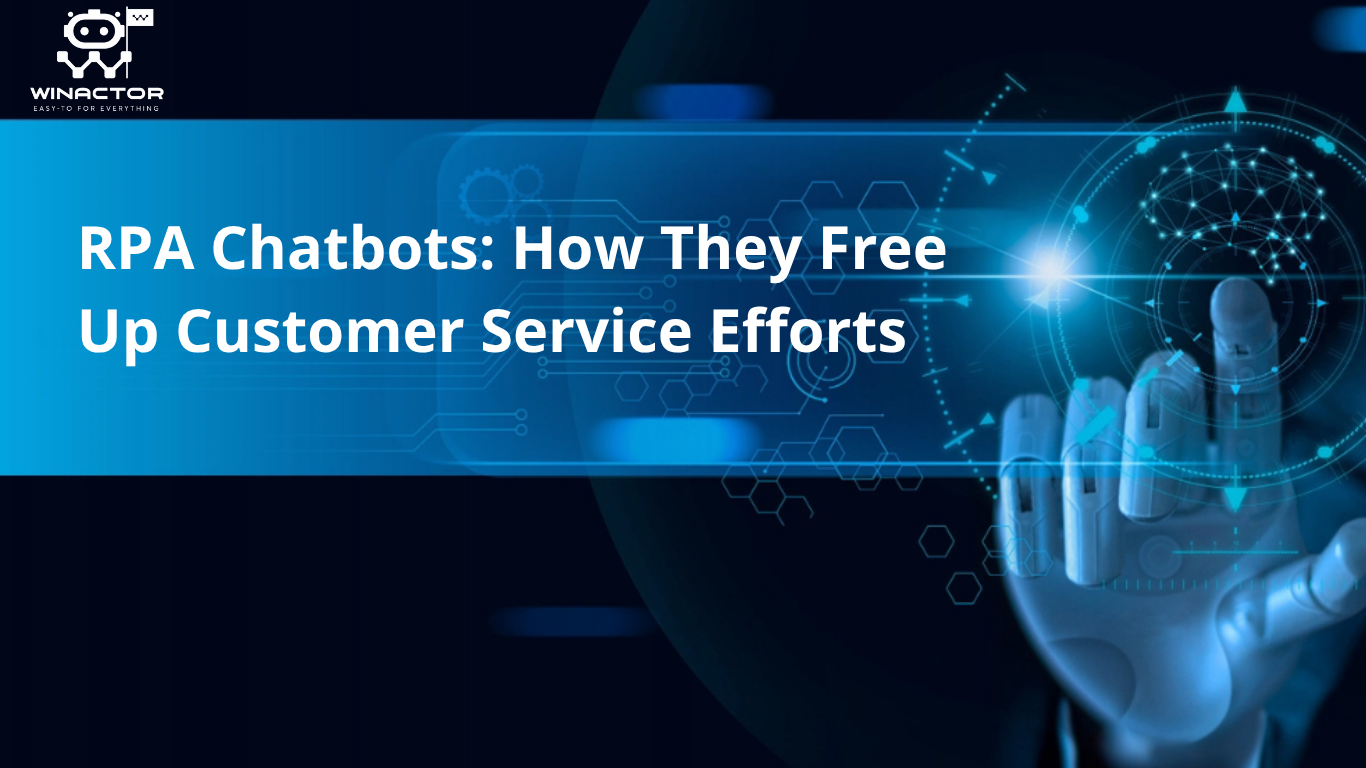Nowadays, no matter which industry you’re in, customer service and a customer-focused approach are crucial factors for business success. That’s why companies are increasingly adopting automation and enhancing professional skills to deliver the best possible experiences to their customers. Among the many technologies helping businesses achieve this, two leading solutions are chatbots and Robotic Process Automation (RPA).
According to Juniper Research, chatbots are expected to save businesses over 11 billion US dollars annually by 2025 through faster resolution times and lower staffing costs. Meanwhile, McKinsey reports that RPA can automate up to 87 percent of routine tasks, cutting operational costs by up to 60 percent.
While chatbots handle customer-facing interactions, RPA works behind the scenes to execute complex, repetitive tasks. When combined, they offer a powerful solution for efficient, always-on customer support. To understand the value of this combination, let’s start by exploring the differences between RPA and chatbots and how they complement each other.
RPA vs chatbot: Understand the fundamentals
RPA is a technology that uses software bots to automate repetitive, rule-based tasks such as data entry, updating records, or processing transactions, typically performed in the background without user interaction. Some leading RPA tools on the market now are WinActor, Microsoft Power Automate, UiPath, Blue Prism, etc.
Chatbots, on the other hand, are virtual assistants that interact directly with users through text or voice. They’re designed to answer questions, guide users, and handle simple requests in real time. Some popular chatbot tools include Dialogflow by Google, Rasa, ManyChat, Chatfuel, etc.
While RPA and chatbots aim to make life easier, they excel in distinct roles and address different aspects of customer service. Simply put, RPA can:
- Mimic human actions on software interfaces (clicking, copying, filling out forms, etc.).
- Automate repetitive, rule-based backend processes.
- Execute tasks with high accuracy and consistency.
- Support workflows that power customer service tasks.
And a chatbot can:
- Provide an interactive customer communication interface
- Handle natural language processing and understanding
- Handle structured conversations like FAQs, appointment booking, or basic troubleshooting.
- Deliver instant responses to customer queries
- Learn from interactions to improve responses
- Work best when the input is predictable or scripted.
Why you should coexist with RPA and chatbot
When scaling your business, it’s not simply a matter of picking either chatbots or RPA. Instead, the real value lies in allowing both technologies to coexist and work in parallel, each contributing unique strengths to your operations. Rather than viewing them as separate solutions, businesses should see RPA and chatbots as complementary parts of a modern automation strategy that can drive efficiency, lower costs, and enhance the customer experience.
Nowadays, many business owners choose RPA and chatbot solutions because numerous advantages they bring to modern operations, such as:
- Faster response times: Information is retrieved and actions are completed instantly, improving customer satisfaction.
- End-to-end automation of customer service process: From customer interaction to task execution, the entire process is handled seamlessly without human handoffs.
- Reduced operational costs: Fewer support agents are needed for routine tasks, helping companies save on labor costs.
- Improved accuracy: RPA eliminates manual errors in data processing, leading to more reliable results.
- 24/7 support availability: Customers get real-time support and service at any time of day, even outside of business hours.
These growing needs make RPA chatbot solutions a preferred choice for companies looking to future-proof their customer service operations.
How RPA and chatbots are used in customer service
RPA and chatbot are powerful tools to automate customer service and support. Here are some outstanding tasks and areas where you can combine them to strengthen customer support and make your service faster and more efficient.
- Customer ticket creation and routing
Chatbot initiates the conversation with the customer, asks for details (e.g., issue type, urgency), and collects necessary info interactively. Then RPA will automatically create a ticket in the helpdesk system and route it to the correct department or support tier based on predefined business rules.
This process showcases perfect coexistence: chatbots handle natural-language conversations, while RPA performs the backend system actions without human intervention.
- Order confirmation and tracking
Customers expect immediate responses about their orders. In this process, chatbots handle customer inquiries about order status, proactively send updates, and answer tracking questions. Then, RPA retrieves real-time order information from ERP, CRM, or logistics systems and feeds it back to the chatbot.
- Customer feedback and analysis
When it comes to customer feedback analysis, chatbots take charge of gathering input directly from customers through surveys, chats, or simple rating requests, efficiently collecting large volumes of qualitative data. RPA then steps in to process and consolidate this information, performing sentiment analysis and generating reports that provide actionable insights.
This collaboration is a powerful example of turning conversations into intelligence, enabling businesses to transform raw feedback into valuable strategies for improving services, products, and overall customer satisfaction.
To sum up
When RPA and chatbots coexist in the same system, they help businesses maintain efficient and uninterrupted customer service around the clock. As the examples above show, allowing RPA and chatbots to operate side by side brings significant practical benefits for businesses in general, and for customer service teams in particular.
Instead of choosing between RPA and chatbots, companies should implement both technologies in their customer service operations to make the most of each tool’s strengths. Of course, selecting the right solutions and tools that best fit a business’s specific needs and context remains a crucial factor for sustainable success in the long run.
Smart move with WinActor – Modern RPA tool integrated with AI
If you’re looking for an RPA solution with fast processing speed, a user-friendly interface, compatibility with your existing systems, stable performance, and reasonable costs, WinActor is a good choice to go with.
WinActor, provided by NTT DATA, is an RPA tool that automates customer service tasks and works seamlessly with chatbots. From version 7.5, it integrates Generative AI for smarter conversations and faster backend processes like order handling and ticket resolution.
Get a free trial to see how WinActor can transform your customer service! We have a professional consulting team ready to support you whenever needed.





